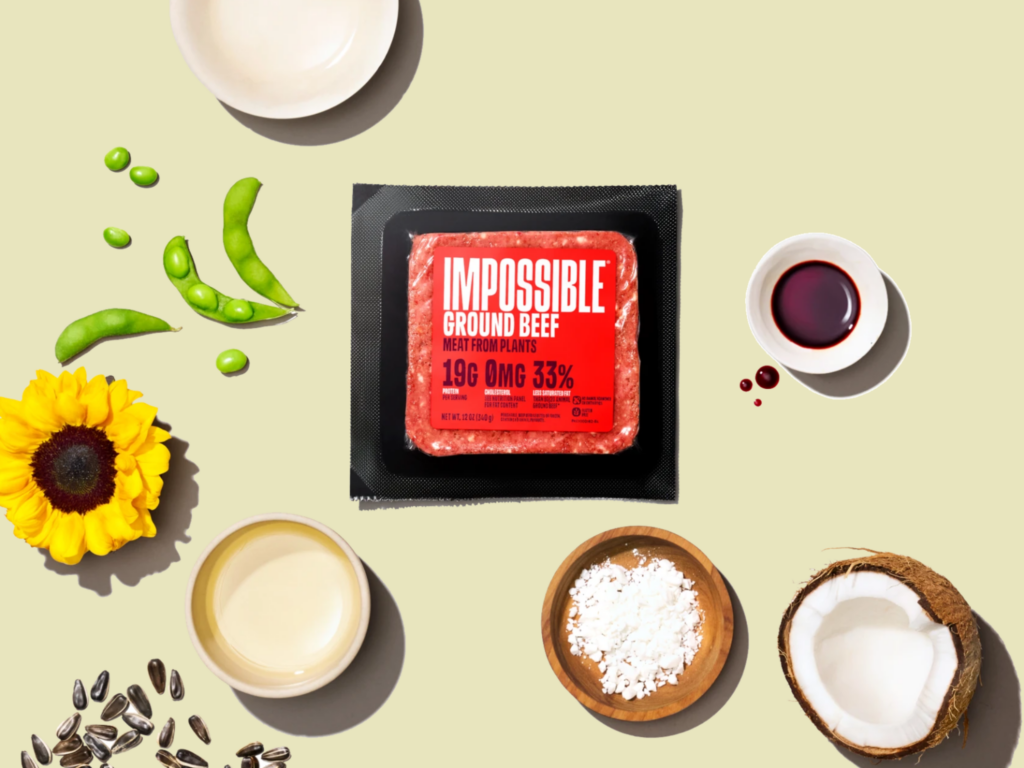Impossible Foods Inches Closer to EU Launch As Regulator Deems GMO Protein Safe
4 Mins Read
After a years-long deadlock, Impossible Foods has received a positive safety assessment by the EU for its genetically modified heme ingredient.
Europeans could be eating the Impossible Burger soon, with the California-based company obtaining its second positive safety assessment by the EU’s food regulator this year.
The European Food Safety Authority’s (EFSA) Panel on Genetically Modified Organisms has ruled that Impossible Foods’s use of soy leghemoglobin, an ingredient derived from genetically modified yeast, is “safe for human consumption with regard to the effects of the genetic modification”.
It’s a major milestone for the company’s long road towards entering the EU market, and marks the culmination of a Clock Stop – a period when evaluation is officially stopped pending further information from the company – that had hampered the process since December 2021.
The publication of the EFSA’s opinion will follow a public consultation period before seeking final approval from the EU Commission and its member states.
How Impossible Foods makes its heme protein

Impossible Foods uses a yeast strain called Komagataella phaffii (formerly named Pichia pastoris) to produce soy leghemoglobin, an additive that contains the heme protein that gives plant-based beef products the distinct flavour and colour of their conventional counterparts.
The company inserts the DNA from soy plants into genetically engineered yeast, which is then fermented in a manner similar to how Belgian beer is brewed. It then isolates the soy leghemoglobin from the yeast and adds it to its beef lineup, which includes minced meat, burgers, and hot dogs.
The precision-fermented ingredient has been described as the element that makes the Impossible Burger “bleed”. Soy leghemoglobin contains the haem B group, which is responsible for the red colour of uncooked beef. When beef is cooked, it causes the oxidation of iron, resulting in a loss of the red colour.
And when the soy leghemoglobin is heated above 62°C or exposed to low pH environments (like the human stomach), it denatures. This, combined with the release of the haem B group, plays a major role in generating the flavours and aromas associated with cooked animal-derived meat.
Food safety bodies in several countries have deemed the ingredient to be safe for human consumption, allowing the Californian firm to launch its beef alternatives in their markets. The EU has been an outlier, thanks to its stringent novel foods regulation.
But in June, the EFSA Panel on Food Additives and Flavourings issued a positive safety assessment of LegH Prep, a liquid preparation containing the soy leghemoglobin and other ingredients. This, however, was provisional, as it was subject to the assessment from the GMO panel.
EFSA decision to be followed by public consultation period

Now, the GMO panel has that Impossible Foods’s ingredient is “safe with respect to potential effects on human health and the environment at the proposed use and use level as far as the impact of the genetic modification is concerned”. The company has suggested a maximum level heme level of 0.8% in its meat analogues, similar to the amount of myoglobin in beef.
The panel added that it did not identify any safety concerns regarding the toxicity and allergenicity of Impossible Foods’s soy leghemoglobin protein, and found no evidence that genetic modification would change the overall allergenicity.
“The agency’s comprehensive, scientific assessment of the safety of soy Leghemoglobin (heme) across two applications reinforces the overall quality and safety of our food, echoing similar approvals from regulators in the United States, Canada, Singapore, Australia, and New Zealand,” an Impossible Foods spokesperson said.
Now, there will be a 30-day consultation period, during which purely scientific comments and questions can be submitted and will need to be addressed by EFSA and the EU Commission. Following that, the Commission will then draft approval decisions to be brought to the Standing Committee on Plants, Animals, Food and Feed, which will discuss and then vote on the draft decisions.
“This week’s positive opinion from the European Food Safety Authority is an important step toward bringing Impossible products to Europe,” the Impossible Foods representative said. “We’re excited to continue our work with EU decision-makers to bring Impossible Foods products to European consumers.”
Impossible Foods recently ended a long-running legal battle with Motif Foodworks, taking over the heme business from the latter, which shut down soon after.



